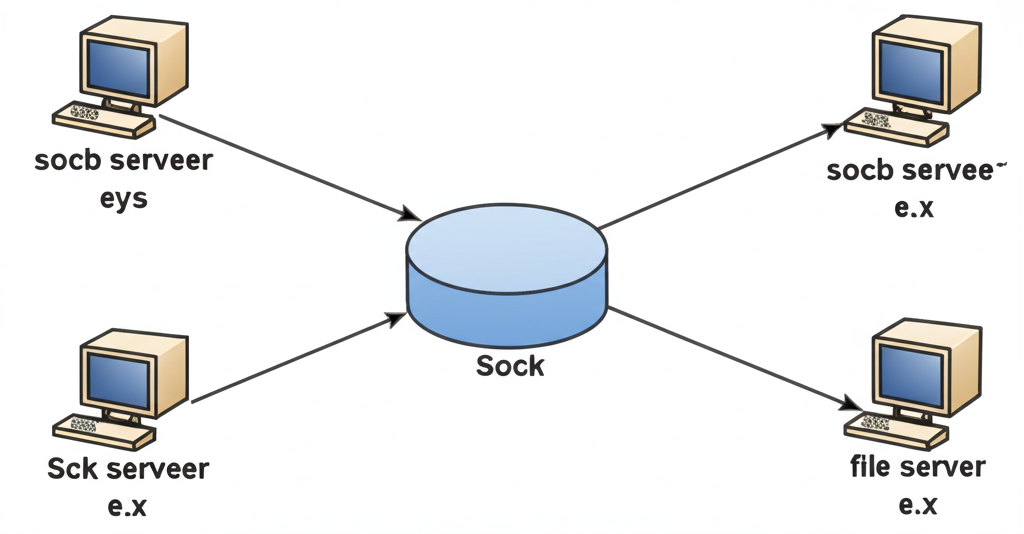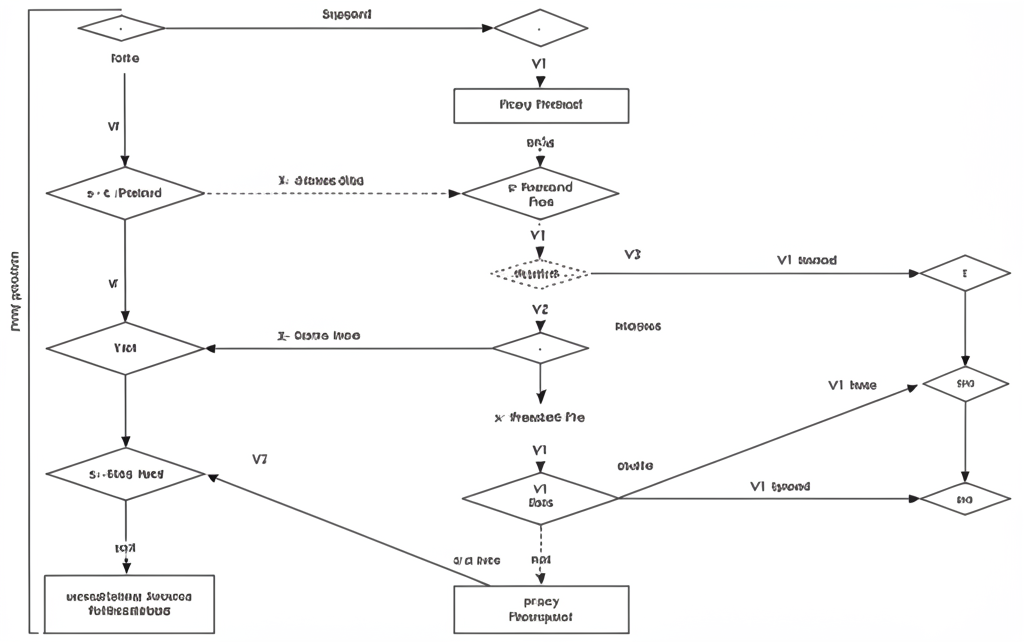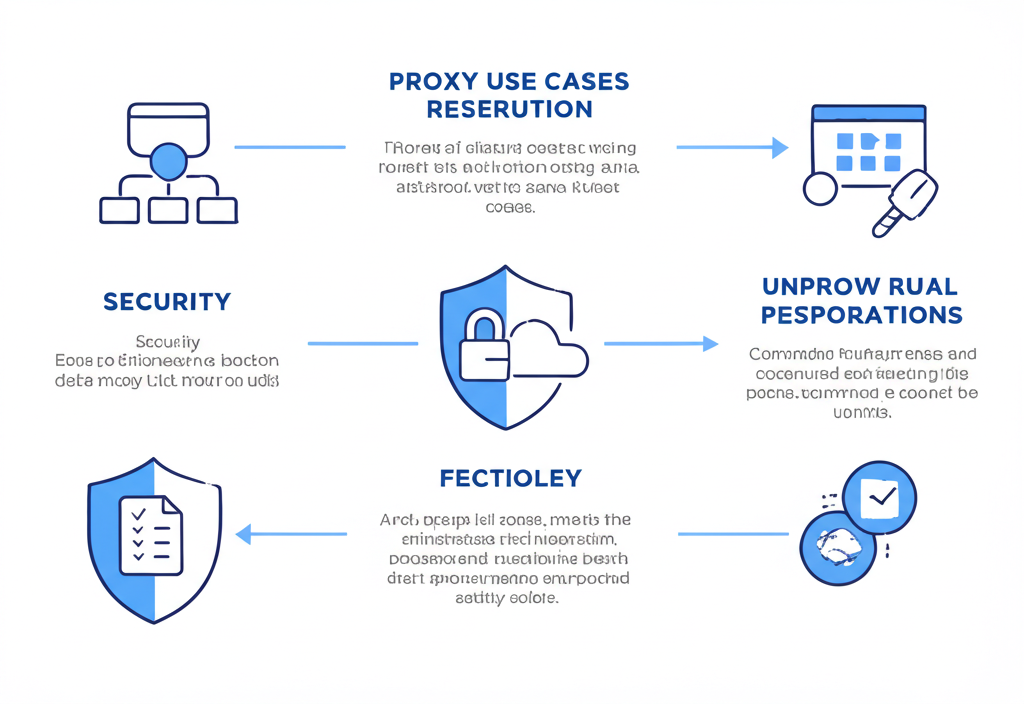Introduction
When setting up proxy servers for your business or personal use, one of the first decisions you'll face is choosing between HTTP and SOCKS proxies. While both serve as intermediaries between your device and the internet, they operate in fundamentally different ways and excel in different scenarios.
This guide provides a detailed comparison of HTTP and SOCKS proxies, explaining their technical differences, performance characteristics, security features, and ideal use cases. By understanding these differences, you can make an informed decision about which proxy type best suits your specific needs.
What is an HTTP Proxy?
An HTTP proxy is designed specifically to handle HTTP and HTTPS traffic—the protocols that power web browsing. It operates at the application layer (Layer 7) of the OSI networking model, which means it fully understands and can interpret HTTP requests and responses.
Key Characteristics of HTTP Proxies:
- ✓Protocol-Specific: Designed exclusively for HTTP/HTTPS traffic, making them highly optimized for web browsing.
- ✓Content Awareness: Can understand and modify HTTP headers and content, enabling features like content filtering and caching.
- ✓Authentication: Supports various authentication methods to control access to the proxy.
- ✓Caching: Can store copies of frequently accessed web content to improve performance.
- ✗Limited Protocol Support: Cannot handle non-HTTP protocols like FTP, SMTP, or gaming protocols.
HTTP Proxy Variants
HTTP proxies come in several variants, each with specific capabilities:
- •Forward Proxy: The standard configuration where clients connect to the proxy to access external websites.
- •Reverse Proxy: Sits in front of web servers, directing client requests to the appropriate backend server.
- •Transparent Proxy: Intercepts HTTP traffic without requiring client configuration.
- •Anonymous Proxy: Hides client information from destination servers for enhanced privacy.
What is a SOCKS Proxy?
SOCKS (Socket Secure) is a more general-purpose proxy protocol that operates at the session layer (Layer 5) of the OSI model. Unlike HTTP proxies, SOCKS proxies establish a TCP connection to any given IP address and port number, making them much more versatile in the types of traffic they can handle.

Key Characteristics of SOCKS Proxies:
- ✓Protocol Agnostic: Can handle virtually any type of internet traffic, including HTTP, HTTPS, FTP, SMTP, and gaming protocols.
- ✓Versatility: Ideal for applications that use multiple protocols or non-standard ports.
- ✓Lower Overhead: Generally has less processing overhead since it doesn't inspect or modify the traffic content.
- ✗No Content Filtering: Cannot inspect or filter content based on HTTP headers or payload.
- ✗No Caching: Unable to cache content to improve performance.
SOCKS Protocol Versions
The two main versions of the SOCKS protocol in use today:
- •SOCKS4: The older version that supports TCP connections but lacks authentication and UDP support.
- •SOCKS5: The current standard that adds authentication, UDP support, and IPv6 compatibility.
SOCKS5 is generally preferred for its enhanced security features and broader protocol support.
Key Differences Between HTTP and SOCKS Proxies
Understanding the fundamental differences between HTTP and SOCKS proxies is crucial for selecting the right solution for your specific needs. Let's examine these differences across several important dimensions:
Protocol Level Differences
| Feature | HTTP Proxy | SOCKS Proxy |
|---|---|---|
| OSI Layer | Application Layer (Layer 7) | Session Layer (Layer 5) |
| Protocol Support | HTTP/HTTPS only | Any TCP/UDP protocol (with SOCKS5) |
| Content Awareness | Can inspect and modify HTTP headers and content | Cannot inspect or modify packet contents |
| URL Handling | Understands and can process URLs | Only handles IP addresses and ports |
| DNS Resolution | Proxy resolves domain names | Client resolves domain names (SOCKS4) Proxy can resolve names (SOCKS5) |

Performance Considerations
Performance differences between HTTP and SOCKS proxies can significantly impact your experience, especially for bandwidth-intensive or latency-sensitive applications.
HTTP Proxy Performance
- ✓Caching: Can improve performance for frequently accessed content
- ✓Compression: Can compress HTTP responses to save bandwidth
- ✗Higher Overhead: Content inspection and modification adds processing time
- ✗Protocol Conversion: May need to convert between HTTP versions
SOCKS Proxy Performance
- ✓Lower Overhead: Minimal processing as it doesn't inspect packet contents
- ✓Protocol Efficiency: No protocol conversion required
- ✓Better for Real-time: Lower latency for gaming, streaming, and VoIP
- ✗No Caching: Cannot cache content to improve repeat access
Performance Verdict: For raw speed and low latency, especially with non-HTTP protocols, SOCKS proxies generally outperform HTTP proxies. However, for web browsing with repetitive content access, HTTP proxies with caching can provide better overall performance.
Security Features
Security capabilities differ significantly between HTTP and SOCKS proxies, influencing which is more appropriate for different security requirements.
| Security Feature | HTTP Proxy | SOCKS Proxy |
|---|---|---|
| Authentication | Basic, Digest, NTLM, Kerberos | None (SOCKS4), Username/Password (SOCKS5) |
| Content Filtering | Can filter based on content, URLs, or headers | Cannot filter based on content |
| Malware Scanning | Can scan HTTP content for malware | Cannot scan content |
| Protocol Leakage | May leak DNS requests or non-HTTP traffic | Tunnels all traffic, reducing leakage |
| Encryption | Depends on implementation (HTTPS) | No built-in encryption (requires SSH/SSL tunneling) |
Security Note
Neither HTTP nor SOCKS proxies provide encryption by default. For true security, both should be combined with encryption protocols like SSL/TLS. Many organizations use proxies in conjunction with VPNs to achieve both the benefits of proxies and strong encryption.
When to Use Each Type of Proxy
Choosing between HTTP and SOCKS proxies depends on your specific use case. Here's a guide to help you determine which proxy type is best suited for different scenarios.
Ideal HTTP Proxy Use Cases
Web Browsing and Content Filtering
HTTP proxies excel at filtering web content, making them ideal for organizations that need to control employee web access or filter out malicious content. They can block specific websites, filter based on content categories, and scan downloads for malware.
Web Scraping and Data Collection
For web scraping operations that need to handle cookies, authentication, or specific HTTP headers, HTTP proxies provide the necessary protocol awareness. They can also help manage sessions and handle redirects more intelligently.
Caching and Bandwidth Optimization
Organizations with limited bandwidth can benefit from HTTP proxies' caching capabilities, which reduce redundant downloads. This is particularly valuable in educational institutions, remote offices, or regions with expensive or limited internet connectivity.
Content Transformation
HTTP proxies can modify web content on the fly, enabling features like ad blocking, content compression, or adapting content for mobile devices. This makes them valuable for content delivery networks and mobile optimization services.
Ideal SOCKS Proxy Use Cases
Multi-Protocol Applications and Services
Applications that use multiple protocols or non-HTTP protocols benefit from SOCKS proxies. This includes email clients, FTP programs, IRC chat, P2P applications, and gaming software that need to establish various types of connections.
Low-Latency Requirements (Gaming, VoIP)
Applications sensitive to latency, such as online gaming, voice chat, or video conferencing, perform better with SOCKS proxies due to their lower processing overhead and lack of content inspection.
Circumventing Network Restrictions
SOCKS proxies are more effective at bypassing network restrictions that block specific protocols or ports, as they can tunnel any TCP/UDP traffic. This makes them valuable for accessing restricted services in corporate or censored network environments.
General Anonymity Needs
When users need to mask their IP address across multiple applications and protocols, SOCKS proxies provide a more comprehensive solution than HTTP proxies, which only handle web traffic.

Implementation Considerations
When implementing either HTTP or SOCKS proxies in your environment, consider these practical factors to ensure successful deployment:
Client Configuration
Different applications support proxy configurations in different ways:
- •HTTP Proxies: Most browsers and web applications have built-in support
- •SOCKS Proxies: May require additional configuration or specialized clients
- •System-wide Proxying: Consider tools like Proxifier (Windows/Mac) or proxychains (Linux) for applications without native proxy support
Authentication and Access Control
Secure your proxy implementation with appropriate authentication:
- •HTTP Proxies: Support various authentication methods (Basic, Digest, NTLM)
- •SOCKS5: Supports username/password authentication
- •IP Whitelisting: Consider restricting access based on source IP addresses
Performance Optimization
Maximize proxy performance with these considerations:
- •Hardware Resources: Allocate sufficient CPU and memory, especially for HTTP proxies performing content inspection
- •Connection Pooling: Configure appropriate connection limits and timeouts
- •Caching Configuration: For HTTP proxies, optimize cache size and expiration policies
Monitoring and Logging
Implement appropriate monitoring for your proxy infrastructure:
- •Traffic Logs: HTTP proxies can provide detailed request logs; SOCKS proxies typically offer more limited logging
- •Performance Metrics: Monitor throughput, connection counts, and response times
- •Security Monitoring: Watch for unusual traffic patterns or authentication failures
Hybrid Approaches: Getting the Best of Both Worlds
Many organizations implement both HTTP and SOCKS proxies to address different needs:
- HTTP proxies for web traffic, content filtering, and caching
- SOCKS proxies for applications that need protocol flexibility or low latency
- Proxy auto-configuration (PAC) files to direct traffic to the appropriate proxy based on destination
- Proxy chaining, where traffic passes through multiple proxies for enhanced anonymity or to combine different proxy features
Conclusion
HTTP and SOCKS proxies serve different purposes and excel in different scenarios. HTTP proxies are specialized tools optimized for web traffic, offering content awareness, filtering, and caching capabilities. SOCKS proxies, on the other hand, provide versatile protocol support and typically deliver better performance for non-HTTP applications.
When choosing between these proxy types, consider your specific requirements:
- •Choose HTTP proxies when you need web-specific features like content filtering, URL blocking, or caching, and when your traffic is primarily HTTP/HTTPS.
- •Choose SOCKS proxies when you need to support multiple protocols, require lower latency, or need to bypass network restrictions that block specific protocols.
For many organizations, the optimal solution involves using both proxy types in tandem, directing traffic to the appropriate proxy based on the protocol and specific requirements of each application. By understanding the strengths and limitations of each proxy type, you can implement the right proxy infrastructure to meet your security, performance, and accessibility needs.
Remember that neither proxy type provides encryption by default, so for sensitive traffic, consider combining your proxy solution with appropriate encryption technologies like VPNs or SSL/TLS.
Written by FindProxy.org Research Team
Proxy Technology Experts